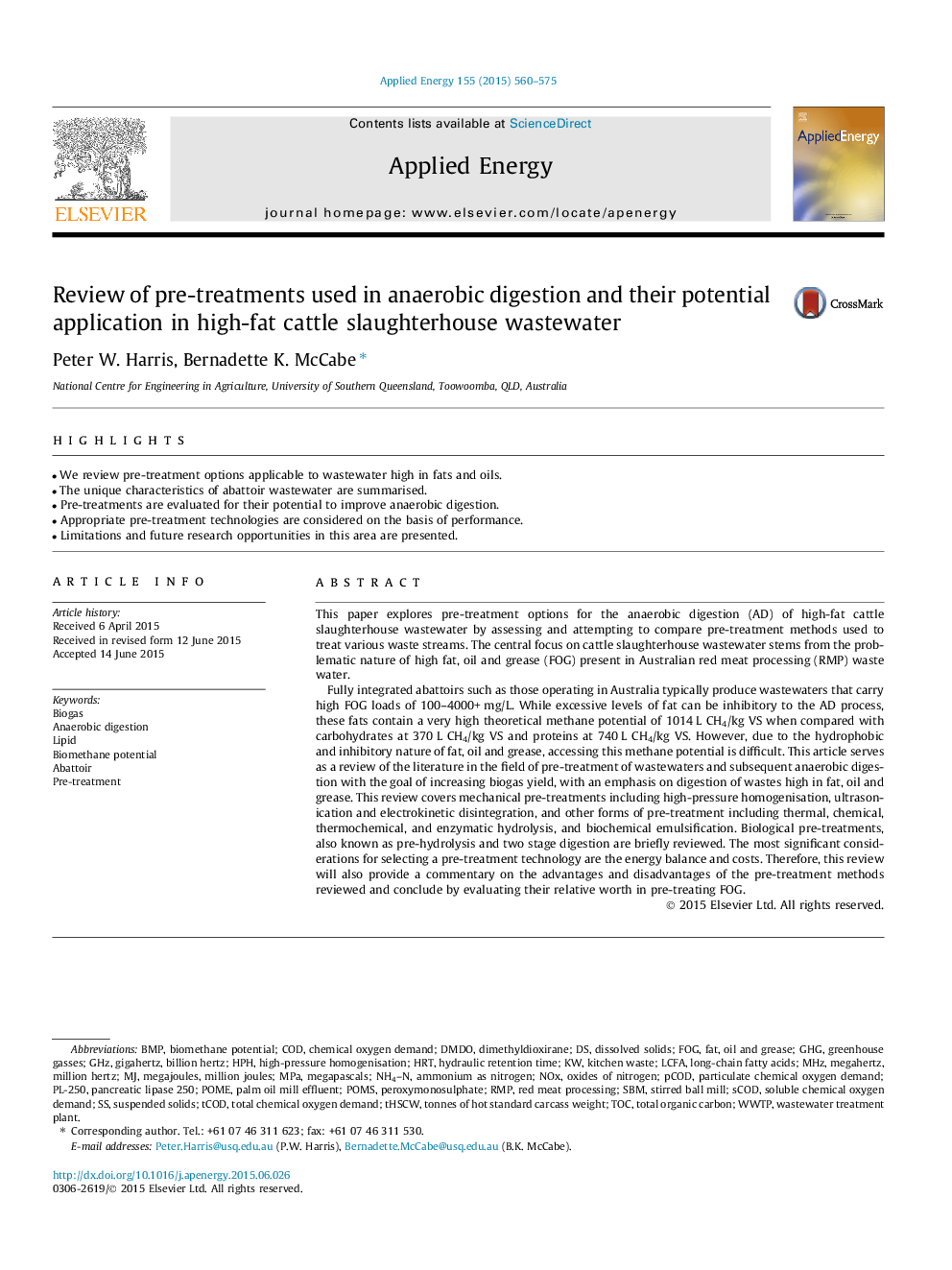| Article ID | Journal | Published Year | Pages | File Type |
|---|---|---|---|---|
| 6686585 | Applied Energy | 2015 | 16 Pages |
Abstract
Fully integrated abattoirs such as those operating in Australia typically produce wastewaters that carry high FOG loads of 100-4000+Â mg/L. While excessive levels of fat can be inhibitory to the AD process, these fats contain a very high theoretical methane potential of 1014Â L CH4/kg VS when compared with carbohydrates at 370Â L CH4/kg VS and proteins at 740Â L CH4/kg VS. However, due to the hydrophobic and inhibitory nature of fat, oil and grease, accessing this methane potential is difficult. This article serves as a review of the literature in the field of pre-treatment of wastewaters and subsequent anaerobic digestion with the goal of increasing biogas yield, with an emphasis on digestion of wastes high in fat, oil and grease. This review covers mechanical pre-treatments including high-pressure homogenisation, ultrasonication and electrokinetic disintegration, and other forms of pre-treatment including thermal, chemical, thermochemical, and enzymatic hydrolysis, and biochemical emulsification. Biological pre-treatments, also known as pre-hydrolysis and two stage digestion are briefly reviewed. The most significant considerations for selecting a pre-treatment technology are the energy balance and costs. Therefore, this review will also provide a commentary on the advantages and disadvantages of the pre-treatment methods reviewed and conclude by evaluating their relative worth in pre-treating FOG.
Keywords
LCFADMDOPCODSBMRMPMPAHPHSCODTCODHRTGHGWWTPTOCNOxPOMsStirred ball millLong-chain fatty acidsOxides of nitrogenBiogasWastewater treatment plantchemical oxygen demandDissolved solidsSuspended solidsDimethyldioxiraneKitchen wastehydraulic retention timePalm oil mill effluentLipidsoluble chemical oxygen demandBMPFogMHzAnaerobic digestionHigh-pressure homogenisationBiomethane potentialPeroxymonosulphatePOMEPre-treatmentCodAbattoirtotal chemical oxygen demandTotal organic carbonGreenhouse gassesGHz
Related Topics
Physical Sciences and Engineering
Energy
Energy Engineering and Power Technology
Authors
Peter W. Harris, Bernadette K. McCabe,
